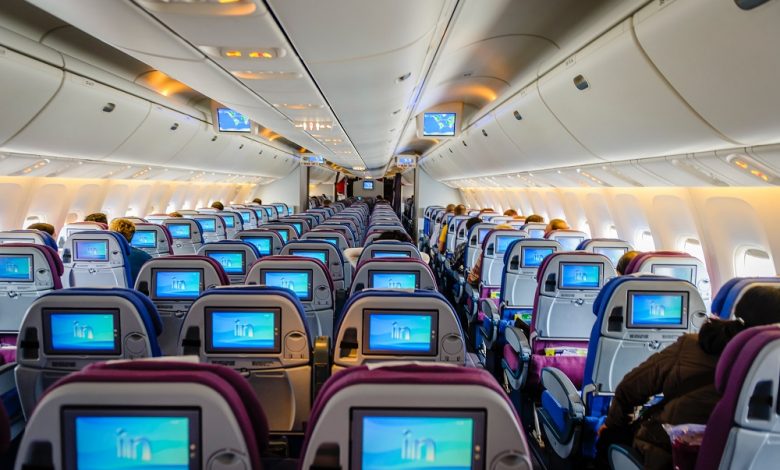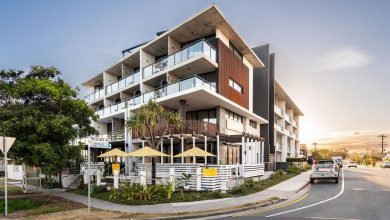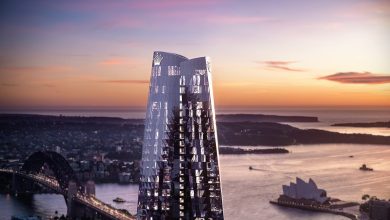
War fuels spike in airline prices
Rocketing airfares impact incoming international flights and tourism rebuild
THE already inflated price of international flights could skyrocket by as much as 15 percent as Russia’s invasion of Ukraine sparks rising fuel costs.
A boycott of Russian oil has caused global fuel prices to spike, and airline passengers will be forced to absorb the cost on the back of domestic and international borders being closed for two years due to COVID-19.
This will severely impact both incoming and outgoing international flights for Australia.
With the price of oil at $US120 a barrel, Qantas CEO Alan Joyce warned of a 7 percent increase in fares for his airline with a further 1 percent lift for every $US4 jump in the oil price.
Some experts are forecasting oil prices could hit as high as $US200 a barrel.
Airfares are already considerably higher than pre-COVID prices and Flight Centre CEO, Graham Turner said a further increase of up to 15 percent is on the cards.
Airline prices had already surged by an average of more than 50 percent across all destinations compared with pre-pandemic travel.
As airlines slowly rebuild services to and from Australia after two years of being grounded, the cost of international travel is expected to remain high.
International airlines are operating only about 20 percent of passenger services into Australia compared with pre-pandemic levels.
Guardian Australia reported that prices for economy seats are on average 54 percent above pre-pandemic levels.
Before the pandemic, international tourism was a $6 billion industry in Queensland and growing year on year. While reopening the domestic and international borders is a crucial milestone, recapturing the lucrative international market – and restoring travel confidence – will take time and a lot of investment.
Queensland’s State Government and major airports have allocated $200 million to entice more international flights to the state.
Sunshine Coast Airport CEO, Andrew Brodie said investment in his airport would create jobs for generations to come and provide a much-needed boost to the tourism industry.
He said international visitors stayed longer, spent more, and shared their experiences with friends and family, providing the key to repeat visitation.
Queensland Premier Annastacia Palaszczuk said helping the State’s tourism industry rebuild was an important part of the Government’s COVID-19 Economic Recovery Plan.
“I know firsthand how COVID-19 has affected tourism businesses throughout our state,” Ms Palaszczuk said. “But now we’re ready to welcome back visitors.”
Queensland has launched its first national tourism campaigns in more than 18 months, a series of initiatives worth $5.2 million around the country taking the first steps towards international marketing.
State Tourism Minister, Stirling Hinchliffe said his Government through Tourism and Events Queensland continued to work with overseas travel partners reminding them of the world-class visitor experiences only found in Queensland.
Up and down the Queensland coast the reopening of international borders has been a cause for celebration but many operators say it will take time for visitor numbers to come anywhere near pre-pandemic levels.
Bob Flemming at Townsville’s Billabong Sanctuary has been fighting to keep the property’s head above water for two years.
He told the ABC that while he could see a light at the end of the tunnel “we’re not popping the champagne corks just yet – I think it’s going to be a long while before we see out internationals return.”
And Jack Fantini, from Base Backpackers on Magnetic Island, said that while his hostel was full two years ago with 180 people staying every single night and a three-month wait list, there was “now only a handful of guests.”
He expected it would take six months for numbers to build up again.
But Visit Sunshine Coast CEO, Matt Stoeckel said the recent announcement that Queensland’s Sunshine Coast had topped the world’s Tourism Sentiment Index as the most loved destination on the planet, highlighted the potential the region had to quickly regrow visitor numbers.
“Prior to COVID-19, international travellers represented more than 11 percent of our market and contributed $285 million to the economy,” Mr Stoeckel said.
“We believe we have the potential to strongly rebuild these markets, with our nature-based tourism offering being what international travellers are likely to be seeking for their next holiday.”
Queensland Tourism Industry Council chief executive, Daniel Gschwind told Accom News that the reopening of Australia’s borders to international tourists provided Queensland’s tourism industry with a much-needed confidence boost and an assurance that the industry was on the road to recovery.
“Yet the financial benefits of open international borders won’t be instantaneously felt by our operators,” he said.
“As Australia is one of the last countries to open its borders to international tourists, Queensland will be competing with established holiday destinations all vying for holidaymakers.
“Our tourism industry is hopeful and looking forward to 2022 and beyond, but we know that there is a lot of hard work ahead of us yet.”
Grantlee Kieza OAM has won three Queensland Media Awards, two Australian Sports Commission Awards and has been a finalist for the Walkley and News Awards and for the Harry Gordon Award for Australian sports journalist of the year. In 2019 he received the Medal of the Order of Australia for his writing. You can find more of his work in our AccomNews & Resort News print magazines.
He has written 22 acclaimed books, including bestsellers Hudson Fysh, The Kelly Hunters, Lawson, Banks, Macquarie, Banjo, Mrs Kelly, Monash, Sons of the Southern Cross and Bert Hinkler.







